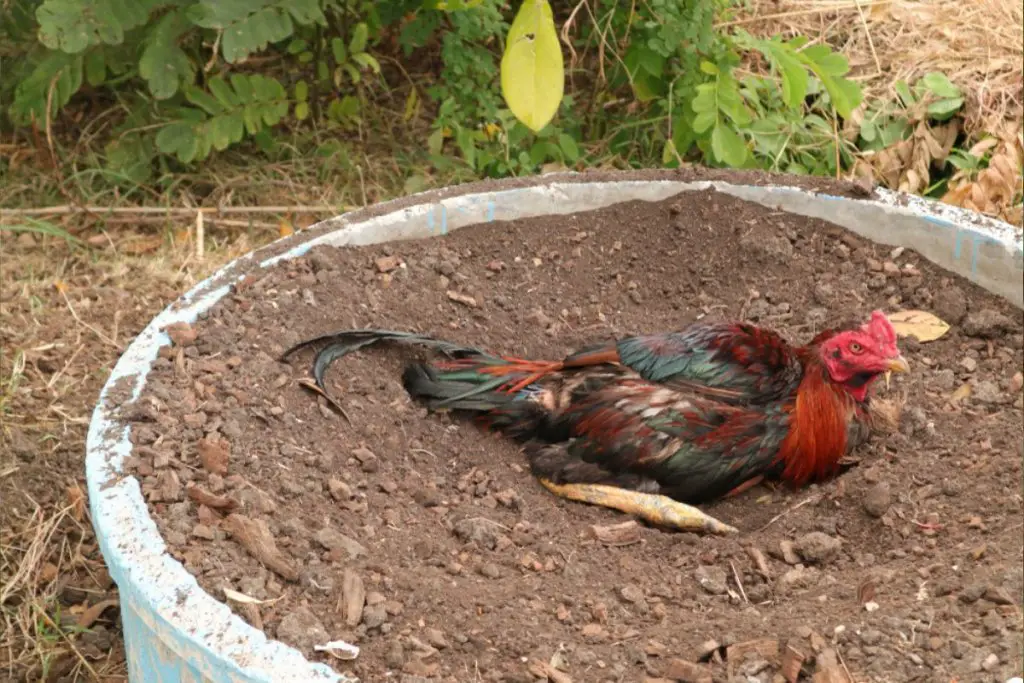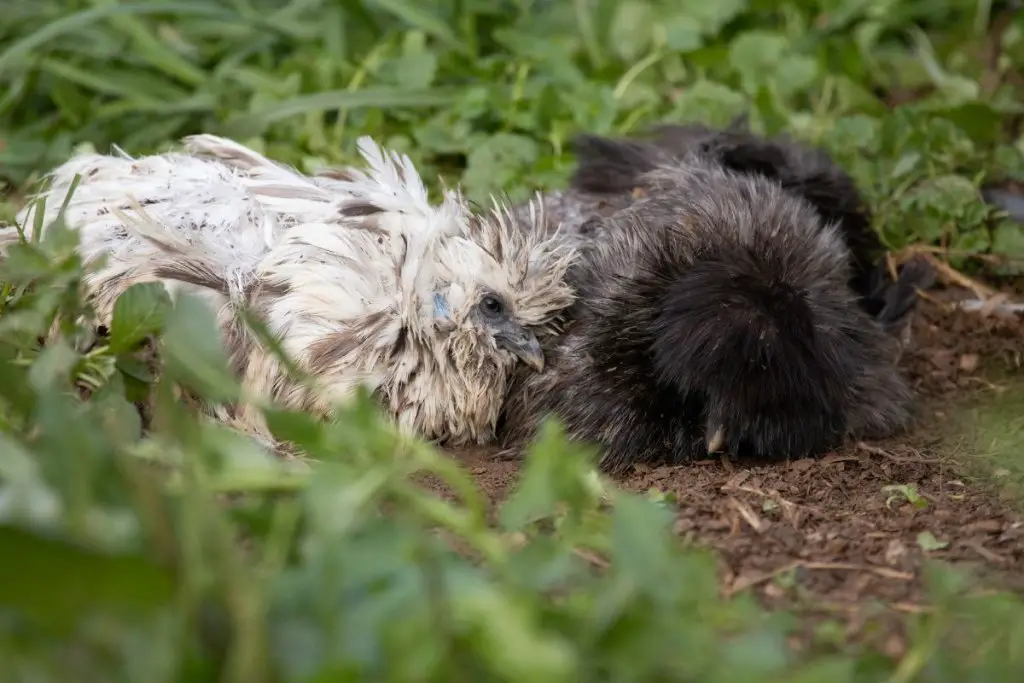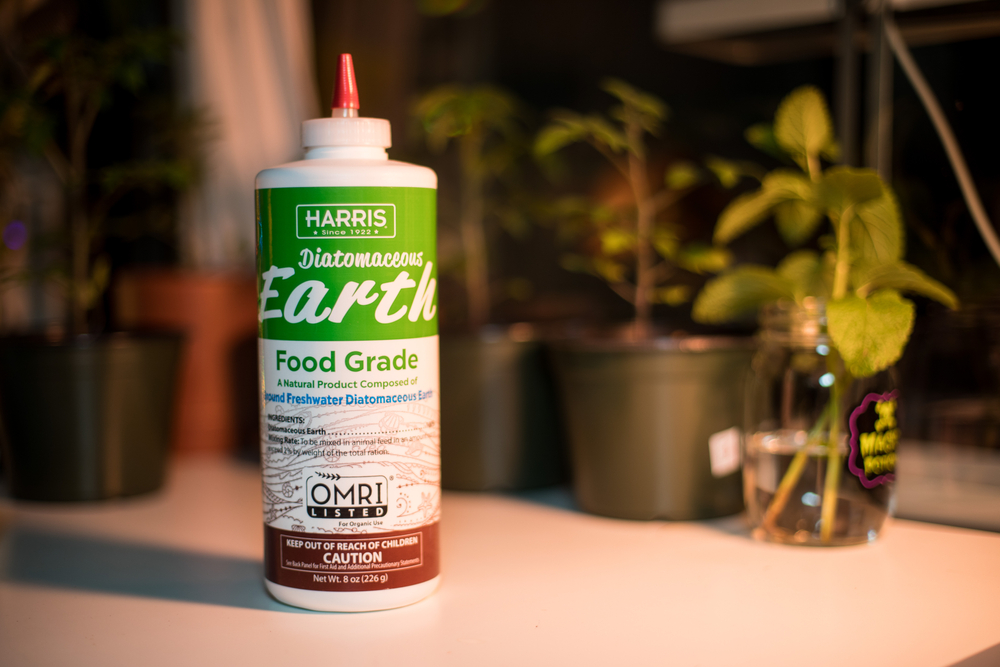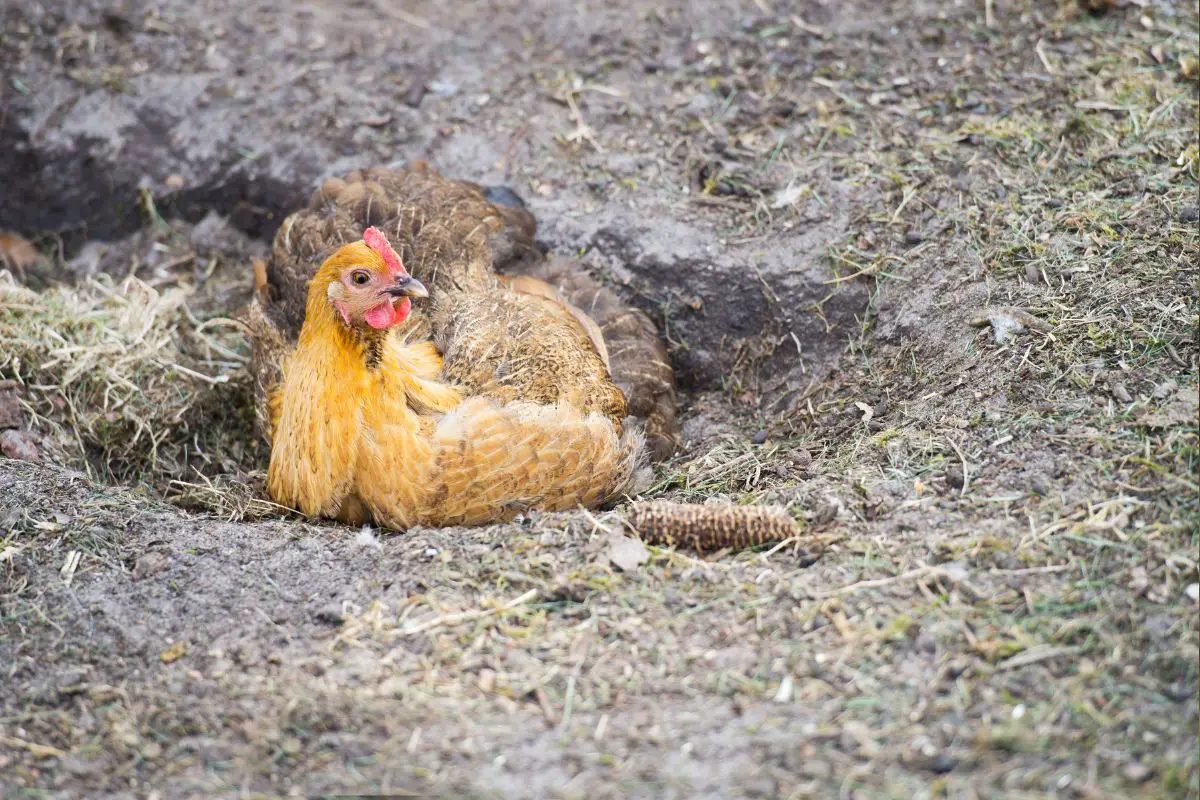Chicken dust baths are a necessary part of raising a healthy flock. A dust bath should contain dry dirt, diatomaceous earth, and sometimes clean builders sand.
As a chicken keeper, making sure that your flock stays healthy is one of the most important parts of the job. You can stop many illnesses that affect chickens by simply ensuring that their body stays clean.
Every chicken’s personal hygiene is improved by having good bathing habits, and most of them take care of themselves through what is called dust bathing.
Table of Contents
What Is A Dust Bath?
While the name “dust bath” seems like an oxymoron, the process is actually very beneficial for a chicken’s wellbeing. When dustbathing, a chicken will dig into the soil and then proceed to roll around in the dirt, making sure to coat all of their feathers.

The dirt that coats them helps remove unnecessary oils and absorbs moisture that’s caught in the feathers. This in turn gets rid of and repels parasites, like fleas or mites, who are often attracted to moist and unclean areas on another animal’s body.
Dust baths are an instinctual habit that chickens take to in order to clean themselves. So even if you don’t have a designated area for dustbathing, your chickens will often just make a spot of their own somewhere in the yard where they might find loose soil or mulch.
Chickens also use their dust baths as a time to socialize, as you will often find that they like to do it together. When one chicken starts bathing, other members of the flock will join in and start bathing as well. It seems that bath time is also a good time for chickens to gather and bond as they get clean and preen.
How to Make Your Own Chicken Dust Bath
The process for creating your own dust bath is fairly simple:
Find a container and fill it with soil.
However, there are some general rules of thumb to follow to make sure that the dust bath area you make will be ideal for your chickens.
In general:
- Find a container that is big enough to hold all the ingredients in
- But is low enough to the ground so that your chickens can easily get into it.
In most cases, a dust bath similar in size and structure to a small sandbox or kiddie pool will be sufficient.
Once you’ve found or built a container that seems fitting, it’s time to add the soil. The primary components that make up the “dust” mixture are loose, dry soil and clean builder’s sand. It’s important to make sure that any materials that you add are free of chemicals or insecticides to make sure that it is safe for your chickens to bathe themselves in.

Free-ranging chickens like these Silkies above will often naturally find spots for a dirt bath around the yard. However, if you don’t want your chickens digging in certain areas of your yard, you can always spread out a mixture of peat moss and topsoil in spots that you’d prefer them to dust bathe in.
Supplementing Your Soil
While the combination of dry dirt and sand is perfectly fine for a dust bath, there are other materials that you can add into the mix that will greatly benefit the cleaning process. Adding wood ash, Diatomaceous Earth, and dried herbs can enhance the cleaning process of a dust bath.
Wood ash, sometimes called fireplace ash, is rich in various vitamins such as magnesium, calcium, and Vitamin K which are excellent for your chicken’s health. Wood Ash can also remove toxins from the oils found in chicken feathers. Make sure that the ash comes from wood that hasn’t been treated or burned with lighter fluid.
Food Grade Diatomaceous Earth, or DE, is known for its effectiveness in killing parasites such as fleas, ticks, lice, and mites. For this reason, it is often a welcome addition to a dust bath for helping get rid of these pests.

However, even though it is non-toxic, DE can possibly irritate the lungs if inhaled. So, it’s best to take precautions when using DE in your dust bath by only adding small amounts and making sure that it is thoroughly mixed in with the rest of the dust bath’s ingredients.
Herbs are also welcome additions to the dust bath mixture. Some dried herbs can benefit your chicken’s health, like rosemary which is known to help promote the respiratory system. Other herbs like lavender and mint are natural insecticides that will help repel and get rid of potential parasites.
Almost any dried herb that has some sort of health benefit, and isn’t known to be poisonous to chickens, can be a welcome addition to your dust bath.
Maintenance Tips For Your Dust Bath
Now that your dust bath is set up and filled with a balanced combination of “dust”, there are a few things that you can do to make sure that the bath is properly maintained. As is the case for any bathing area, making sure that the dust bath is clean and safe to use is key for having clean chickens.
In order for the dust bath to be most effective, follow these tips:
- Make sure to clean out the dust bath regularly to make sure it is free of chicken droppings and other unwelcome materials. Using tools like a cat litter scoop or a rake will work perfectly for removing poop and wet clumps of soil.
- Ensure the soil is completely dry. If the dust bath becomes muddy, chickens won’t be able to shake themselves clean afterward and likely won’t be able to properly preen themselves
- Cover the dust bath with a tarp or an umbrella to make sure that it will stay dry even after it rains.
- Refill your dust bath every week. When adding more materials to your dust bath, just make sure that the ratios of dirt, fine sand, wood ash, and other substances are unaffected.
Overall, dust baths are easy to set up and maintain, and will always be a vital component of making sure your chickens are healthy and clean. It is always important to make sure that the materials you use in your dust bath are safe for your chickens and that the bath is always kept clean and dry.
Not only will your chickens be happy to have a safe and clean space for bathing, but you will also be grateful knowing that the dust baths will help keep them healthy.

